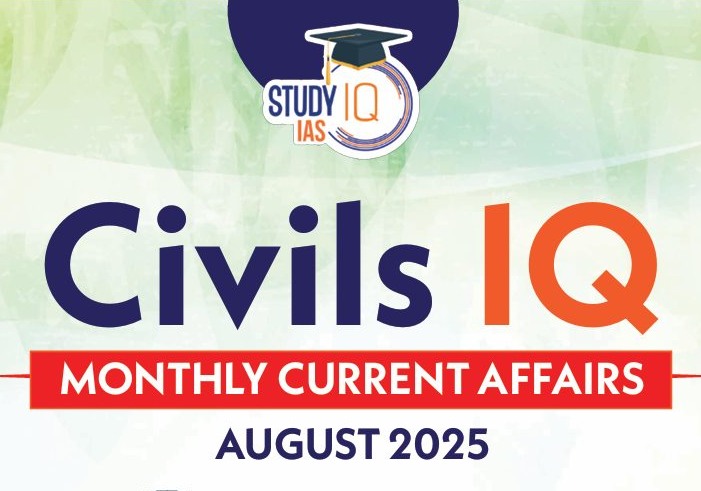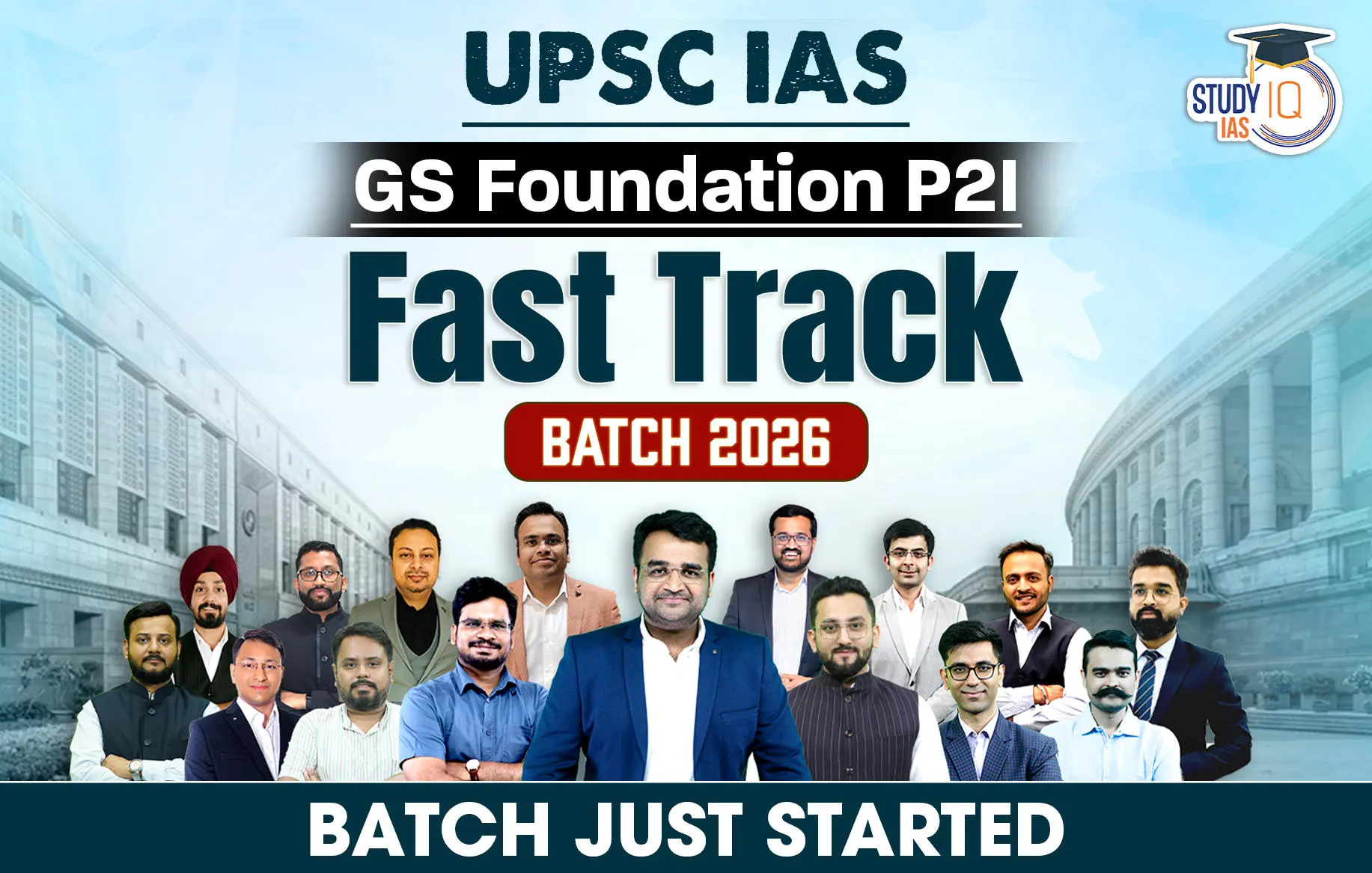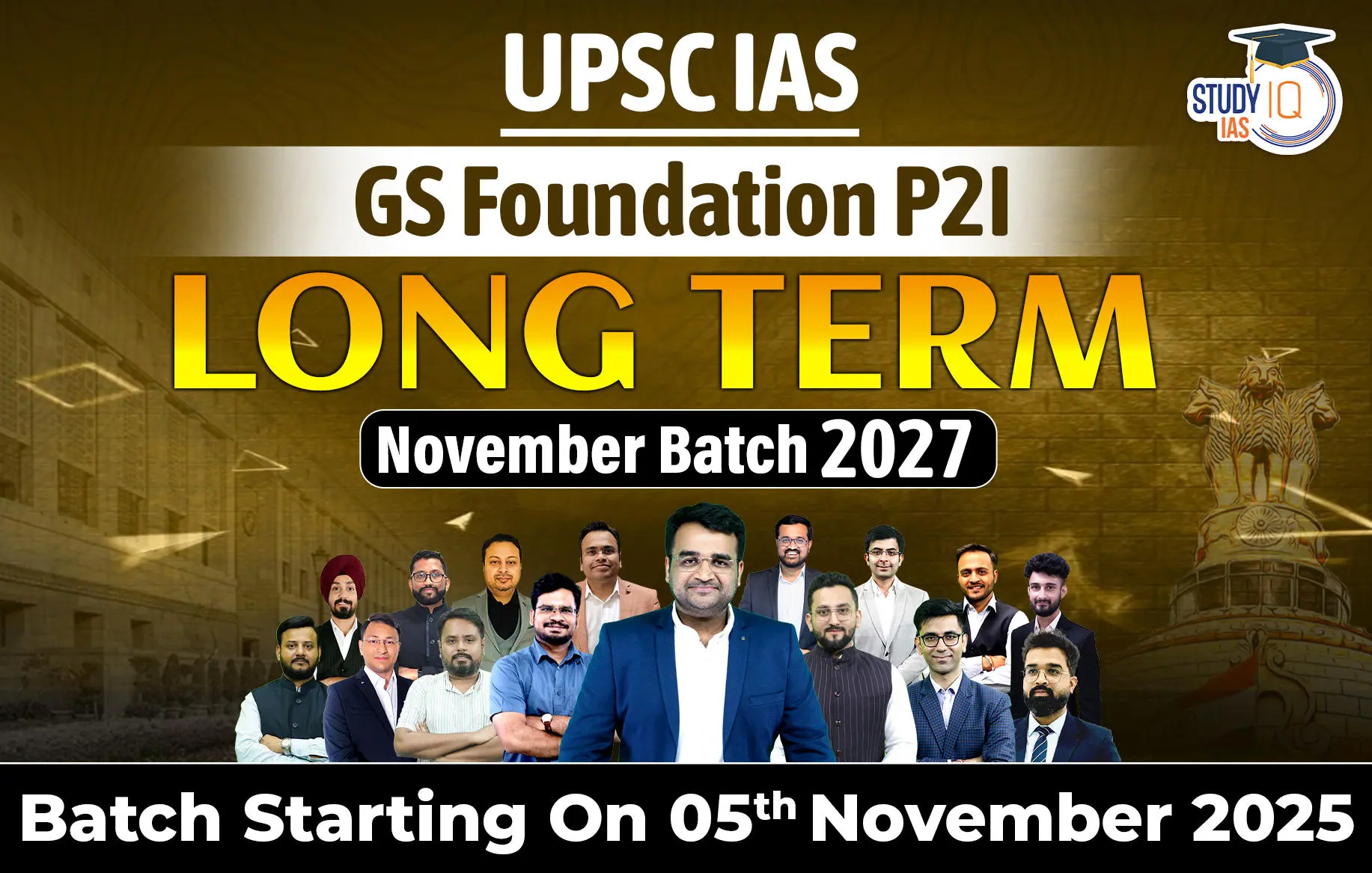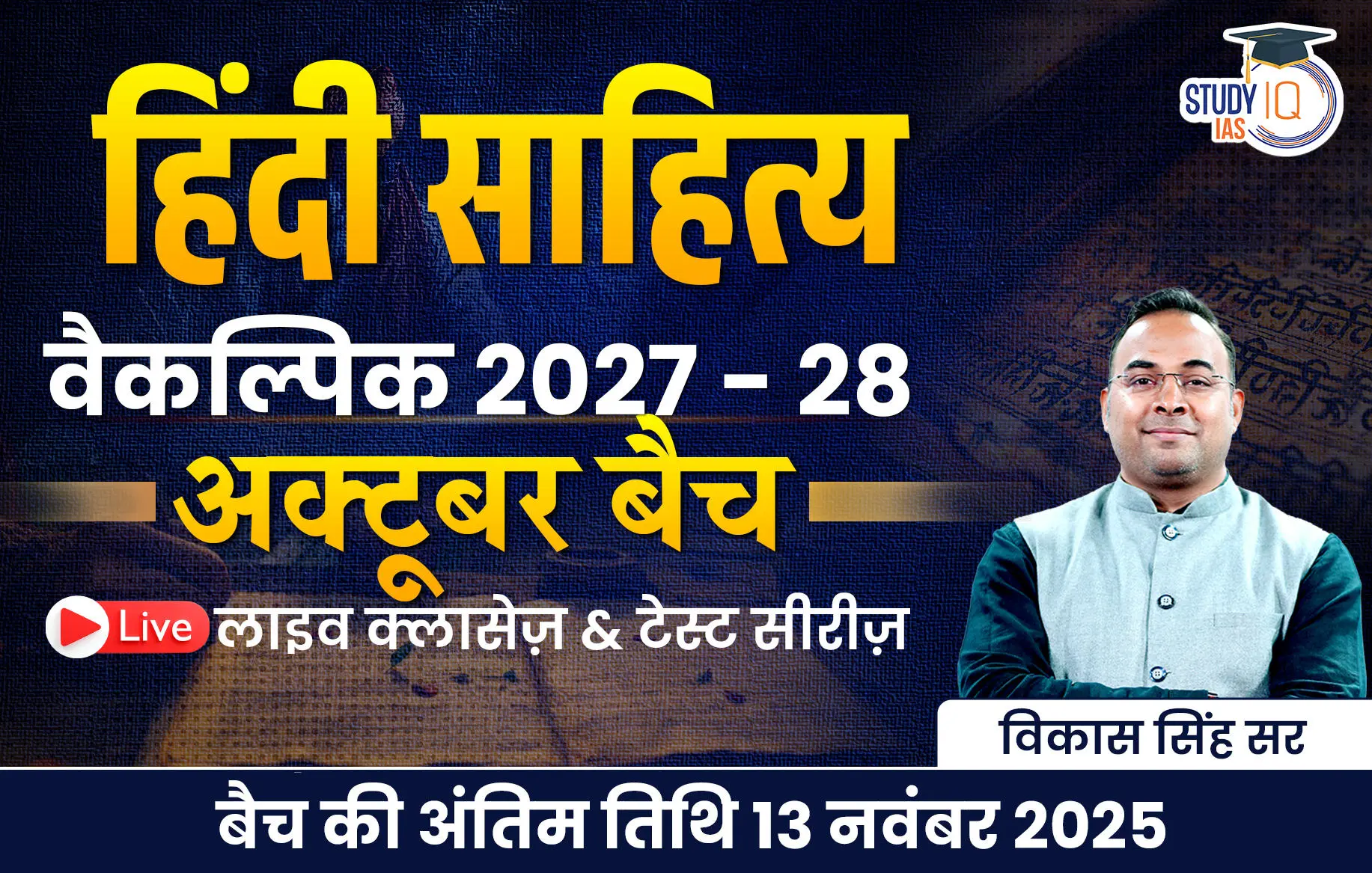Table of Contents
Context: India has met the National Health Policy (NHP) 2017 target of reducing the Maternal Mortality Ratio (MMR) to 100 per lakh live births by 2020 and is on track to achieve the Sustainable Development Goal (SDG) target of reducing MMR to 70 by 2030, according to Union Health Minister J.P. Nadda.
Maternal Mortality Ratio (MMR): Introduction
- Maternal mortality remains a significant public health challenge in India, serving as a key indicator of healthcare quality and accessibility.
- Maternal death refers to the death of a woman during pregnancy or within 42 days of pregnancy termination, due to pregnancy-related causes, excluding accidental or incidental causes.
- Reducing maternal mortality is crucial for improving the health of women and newborns and achieving global health targets.
Definition of Maternal Mortality Ratio (MMR)
- MMR is defined as the number of maternal deaths per 100,000 live births during a specific period.
- India has made notable progress in reducing MMR from 130 per 100,000 live births in 2014-16 to 97 per 100,000 live births in 2018-20.
- This improvement reflects the impact of government programs, enhanced healthcare access, and better medical interventions.
Trends in Maternal Mortality in India
- On May 15, 2015, the World Health Organization (WHO) certified India for eliminating maternal and neonatal tetanus.
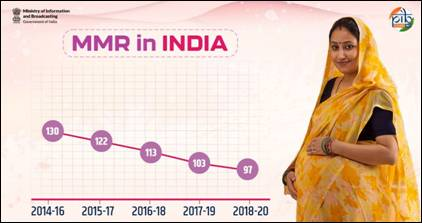
- Maternal mortality in India has shown a consistent decline over the years, highlighting progress in maternal healthcare.
- Some states have reduced their MMR below the SDG target of 70 per 100,000 live births, while others still face challenges in reducing maternal deaths.
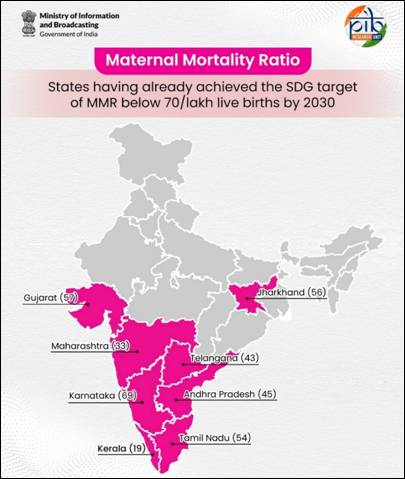
Key Findings from NFHS-5 (2019-21)
- Antenatal Care (ANC) Visits: The percentage of pregnant women attending an ANC visit in the first trimester increased from 59% (NFHS-4, 2015-16) to 70% (NFHS-5, 2019-21).
- Recommended ANC Visits: The percentage of women receiving at least four ANC visits from health providers increased from 51% (2015-16) to 59% (2019-21).
- Institutional Births: Institutional births rose from 79% (2015-16) to 89% (2019-21) at the national level.
- 100% of institutional deliveries were reported in Kerala, Goa, Lakshadweep, Puducherry, and Tamil Nadu, with over 90% in 18 other states/UTs.
- Institutional Deliveries in Rural and Urban Areas: Approximately 87% of rural births and 94% of urban births were conducted in healthcare institutions.
Government Initiatives to Reduce MMR
- Commitment to Global and National Targets: India is committed to the UN Sustainable Development Goal (SDG) target of reducing MMR to 70 per 1,00,000 live births by 2030.
- India has already achieved the National Health Policy (NHP) 2017 target of reducing MMR to less than 100 per 1,00,000 live births by 2020.
- Reproductive, Maternal, Newborn, Child, Adolescent Health, and Nutrition (RMNCAH+N) Strategy: The Ministry of Health and Family Welfare (MoHFW) supports all States/UTs under the National Health Mission (NHM) through the Annual Programme Implementation Plan (PIP).
- RMNCAH+N aims to reduce maternal and neonatal mortality by improving healthcare access and timely interventions for high-risk pregnancies.
Key Programs Under NHM
- Janani Suraksha Yojana (JSY) (Launched in 2005): Aims to reduce maternal and neonatal mortality by promoting institutional deliveries.
- Provides financial assistance to pregnant women, especially from SC, ST, and BPL households.
- Pradhan Mantri Matru Vandana Yojana (PMMVY) (Launched in 2017): Provides maternity benefit of ₹5000 for the first living child of the family.
- Under PMMVY 2.0 (from April 2022), an additional cash incentive is provided for the second child if it is a girl.
- Janani Shishu Suraksha Karyakaram (JSSK) (Launched in 2011): Eliminates out-of-pocket expenses for pregnant women and sick infants in public health institutions.
- Covers free delivery (including caesarean), transport, diagnostics, medicines, and other medical needs.
- Surakshit Matritva Aashwasan (SUMAN) (Launched in 2019): Ensures assured, respectful, and quality healthcare at no cost for pregnant women and newborns.
- Focuses on ending preventable maternal and newborn deaths.
- Under the SUMAN, public healthcare facilities are categorised into basic, BEmONC (Basic Emergency Obstetric and Newborn Care), and CEmONC (Comprehensive Emergency Obstetric and Newborn Care) centres to provide comprehensive healthcare services.
- Pradhan Mantri Surakshit Matritva Abhiyan (PMSMA) (Launched in 2016): Provides free, assured antenatal care on the 9th day of every month.
- Under e-PMSMA, high-risk pregnancies are tracked with financial incentives for extra visits.
- As of March 2025, over 9 crore pregnant women have benefited from this scheme.
- LaQshya (Launched in 2017): Aims to improve the quality of care in labour rooms and maternity operation theatres.
- Ensures respectful and quality care during delivery and postpartum.
Additional Measures
- Capacity Building: MBBS doctors are trained in Anesthesia (LSAS) and Obstetric Care (EmOC) to address the shortage of specialists, especially in rural areas.
- Maternal Death Surveillance Review (MDSR): Tracks maternal deaths at both facility and community levels.
- Helps identify gaps and improve the quality of obstetric care.
- Village Health, Sanitation and Nutrition Day (VHSND): Monthly outreach activity providing maternal and child healthcare, including nutrition services.
- Information, Education, and Communication (IEC/BCC): Promotes early ANC registration, regular ANC visits, institutional deliveries, and proper care during pregnancy.
- Mother and Child Protection (MCP) Card and Safe Motherhood Booklet: Distributed to pregnant women to educate them about diet, rest, danger signs, and available healthcare services.
- Reproductive and Child Health (RCH) Portal: A web-based tracking system for pregnant women and newborns.
- Ensures timely antenatal care, institutional delivery, and postnatal care.
- Anaemia Mukt Bharat (AMB) Strategy: Part of POSHAN Abhiyan to address anaemia among adolescents and pregnant women.
- Includes testing, treatment, and addressing non-nutritional causes of anaemia.
Infrastructure Strengthening
- Comprehensive Abortion Care (CAC) Services: Strengthened through training of healthcare providers, supply of drugs, equipment, and enhanced Information, Education and Communication (IEC) measures.
- Upgradation of Delivery Points: Improved infrastructure, equipment, and trained manpower at delivery points to provide comprehensive RMNCAH+N services.
- Functionalization of First Referral Units (FRUs): Ensured availability of skilled manpower, blood storage units, and referral linkages for better maternal care.
- Maternal and Child Health (MCH) Wings: Established at high caseload facilities to improve the quality of maternal and child healthcare.
- Obstetric ICU/HDU Setup: Operationalized in high caseload tertiary care facilities to handle complicated pregnancies and high-risk cases.
Success Stories and Innovations in Maternal Healthcare
- Madhya Pradesh’s ‘Dastak Abhiyan’: Community-driven campaign focusing on early detection of maternal health risks and timely medical intervention.
- Tamil Nadu’s Emergency Obstetric Care Model: Established a robust referral system ensuring pregnant women receive timely emergency care, reducing complications.
- State-Level Innovations: Several states have implemented unique and targeted strategies to reduce maternal mortality, serving as models for others.
Conclusion
- India has achieved the National Health Policy (NHP) 2017 target of reducing MMR to below 100 per 1,00,000 live births by 2020.
- Continued efforts are needed to reach the SDG target of reducing MMR to below 70 per 1,00,000 live births by 2030.
- Strengthening healthcare systems, expanding maternal health programs, and addressing socioeconomic barriers will be key to further reducing maternal mortality.

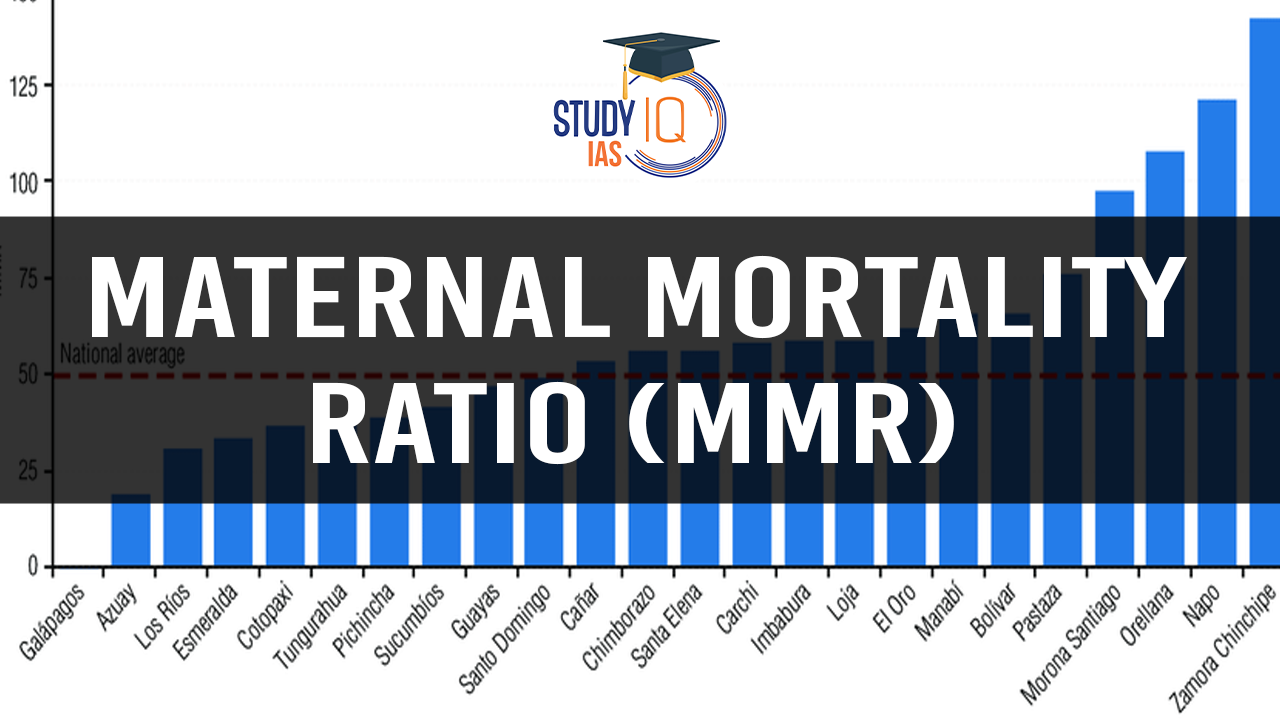
 Geo-tagging of Buildings During Upcoming...
Geo-tagging of Buildings During Upcoming...
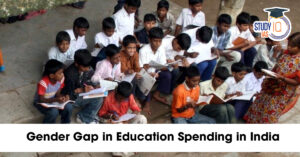 Gender Gap in Educational Expenditure in...
Gender Gap in Educational Expenditure in...
 Reservation and 50% Cap: Constitutional ...
Reservation and 50% Cap: Constitutional ...
